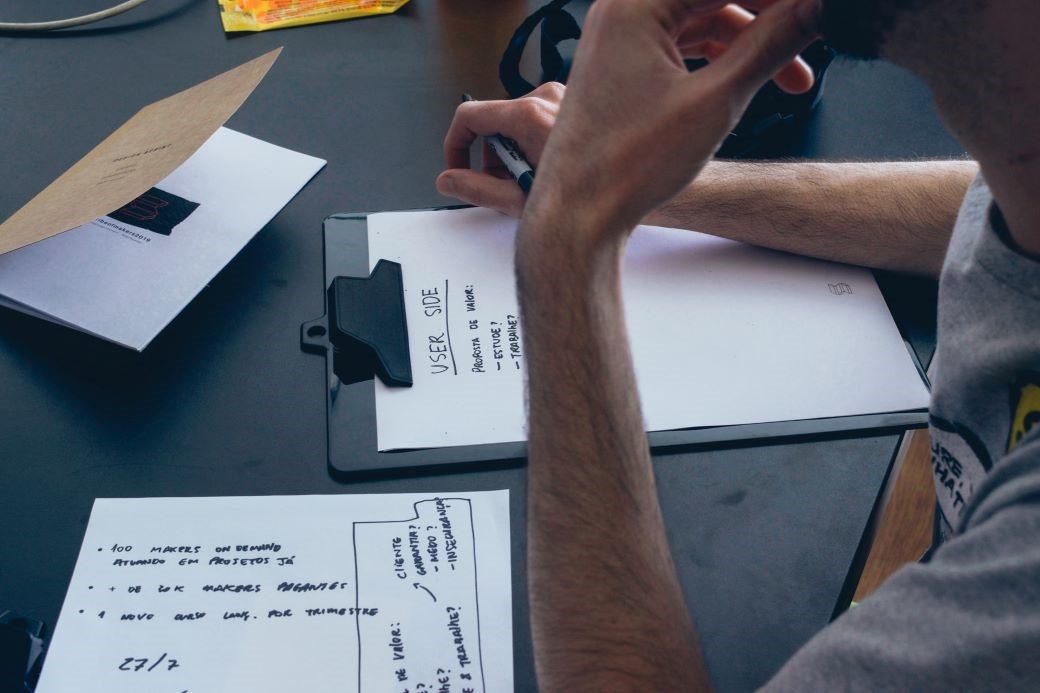
Creating an outstanding product is a challenge that many businesses take on lightly. Even though there are plenty of challenges along the way, it’s in your best interest that the product delivers what it promises.
That’s why usability testing is such a great process. It helps you set up an incredible foundation for your product. It’ll help you eliminate all the unforeseen issues that could appear on launch.
Keep reading to learn more about usability testing and how you should do it for your next product launch.
What is Usability Testing?
Ensuring that your product is easy to use is essential for its success. That applies to any kind of product, no matter if it’s a physical or a digital one. The simplicity helps streamline adoption, as no customer wants to lose time figuring out how something works.
That’s where usability testing comes in and helps product designers create a smooth experience for the customers. It is a process through which a select audience of people try out your product according to a pre-defined scenario.
Businesses conduct usability testing to examine specific features of their platforms and products and find any potential issues.
Aside from deploying a wide range of usability testing tools, there are several essential steps to go over to make the whole process a success.
Benefits of Usability Testing
Usability testing helps businesses understand their products better. It helps identify any challenges and shows how to make improvements. For example, a usability test will help you:
- Find the pain points of your product
- Explore your competition’s flaws
- Create easy-to-follow navigation
- Make finding products on the website easier
- Bring the benefits of using your product closer to your customer
After you’ve finished your usability testing, you can answer all of these questions and detect all the faults of your product. That’s crucial for creating and launching a product that’ll perform as intended and meet the average user’s expectations.
One of the most significant benefits is cutting costs, as the product developers get to act on time and polish the product even before it’s out. For example, when you consider all the website design costs, it’s an intelligent business decision to lower them as much as possible.
When Should You Do Usability Testing?
Getting the most of your usability tests means that you should take them at certain levels of your product development. These are:
- The start of product development: During the first stages of your product creation, you can perform usability testing to see what the competitors lack and whether your initial concept makes sense.
- In the middle of product development: Once you have the first version of your product, it’s time to put it through usability testing and see how it performs. Making adjustments on the go is much easier than having to reword everything once the product is complete.
- When redesigning your product: The good thing about redesigning your product is that you know what doesn’t work and what you want to improve. With usability testing, you can specifically check whether the new design makes the improvements you’ve planned.
These are the best times when you should conduct usability testing for your product, platform or service. It’s because you can make the changes swiftly and proceed to a launch of the product that delivers from the start.
Usability Testing: 7 Crucial Steps

While it’s become normal to launch a product that needs polishing, it’s essential to consider all the usability testing steps you’ll have to take. Depending on your business needs, some usability testing practices will work better than others.
Here are the crucial steps that’ll help you leverage all the potential that usability testing offers.
1. Pick a Usability Test That Works for Your Product
Before you start, explore different testing options to pick the one that suits the nature of your product. There are two essential elements to consider:
- In-person or remote usability testing
- Monitored or unmonitored usability testing
Each of these methods has its pros and cons. For example, in-person monitored usability testing is the best approach to allow your moderators to collect all the information about the process. That includes users’ emotions, behavior, and feedback.
However, the downside of this approach is that it’s costly, as you need a physical space for conducting usability testing. A cheaper alternative is to request help in open areas that have a high traffic of people. Passers-by might be willing to be a part of your testing for a small reward.
In that case, however, you have less control over your target audience. Additionally, there’s a limit on how many people you can use for testing.
On the other hand, remote testing removes those limitations. You can efficiently conduct large-scale usability testing. Unfortunately, the monitoring process becomes much more challenging as you can’t capture all the emotions and reactions that people are experiencing on camera.
Furthermore, if you opt for remote unmonitored usability testing, ensure that all your instructions, scenarios, and feedback requests are crystal clear for the testers. It’s the only way to compensate for the absence of moderators.
Carefully evaluate all the available options and choose one that aligns with your testing goals.
2. Define Goals
While you’re thinking about which testing approach would work best for you, it would be good to define your goals. That’ll impact the final call regarding your usability testing method.
You should figure out several goals so you can proceed to create the test. To get an idea of where you want to go, answer the following questions:
- Who is your target audience?
- How many people will the testing include?
- What reward will you offer to participants?
- Which features will your tests examine?
- What kind of feedback shows excellent results?
Define your target audience so you can find testers relevant to your product. This process is much easier if you’re redesigning, as you already have experience with customers.
When it comes to the testing size, the more people you get to join the process, the better results you can expect. However, remember to include detailed instructions for participants to follow.
Offer an incentive to your testers. It’ll motivate them to join your testing process. A simple gift card, a treat or some kind of discount will make it much easier to find more candidates.
Create a list of all the functionalities and features of your product you want to examine. These are crucial as your usability testing scripts will revolve around them. Be precise with your testing goals so you can create scripts that’ll get the user to test your platform naturally.
Last but not least, create some kind of point system that’ll result in a particular rating of your product’s usability. Set a threshold that your product should exceed.
After answering all the questions, it’s time to move to the next step.
3. Create a Detailed Usability Testing Script
Usability testing scripts play a vital role in the whole process. You should use them to familiarize, instruct and guide the tester through the entire process.
Segment your script into several sections and go into all the tiny details.
- Introduction
- Scenario body
- Follow-up feedback
Introduction
No matter what kind of testing method you opt for, your script will have the abovementioned parts.
The introduction serves to introduce your product to help testers familiarize themselves with their objectives. You can also use the introduction to ask a few questions to learn more about them. Use the information to confirm that you’re working with your target audience.
Use this part to tell the participant that they can’t make any mistakes. Taking that step will help them relax.
Scenario Body
The scenario body needs to be something that will put the tester in a specific role. The scenario needs to lead to action to make the tester try out the feature you’re looking to test.
For example, if you’re looking to try out the purchasing process on your computer and gaming eCommerce website, a scenario might sound something like this:
“Your favorite game is finally out, and you’ve just finished installing it. You start it only to find out that your graphics card needs an upgrade. You pick up your phone, and you land on this website. Use it to find an AMD graphics card from Asus and buy it.”
You’ve just used the script to communicate several essential things to your tester. Those are:
- Performance of your mobile UX
- Search functionality
- Filter functionality
- Purchasing process
The whole process will take the user through multiple site features, allowing you to examine whether there are any hiccups.
Follow-Up Feedback
Use this part to request feedback from your testers. Ask them what parts of using your product were challenging. Did they hope to see something else? What could you do to improve your UX?
The feedback you receive will immediately show how you can improve your product.
4. Find Your Participants
Your test participants need to match your target audience. That’s easy if you’re making a redesign of an already-existing product. All you have to do is reach out to your followers on social media and newsletters to get the participants to help.
If that’s not the case, using a screener with questions is necessary for identifying your target audience. Forward it to those who want to participate in your testing. Create questions so you can recognize which of the participants fit your target audience criteria.
Another approach is to outsource the search for participants. Some agencies can help you with the process and get the audience that you need.
Schedule as many participants as possible, so you’re confident that you’ll have enough data. There’s always a small percentage of users who cancel their testing interviews.
5. Run a Beta Test First

After you’ve created everything, try out your script with a couple of people first. You’ll find all the little challenges that you can correct before you start the real testing campaign.
Ask your friends and colleagues to help out. It’s the best way to finish the test quickly and work with experienced people.
When you’ve found your beta test participants, take them through every single step of your usability test. Pay attention to the following:
- The clarity of the instructions: Make sure that all the instructions are easy to understand. Ask your pilot test participants to share their feedback regarding instructions. If anything is ambiguous, reformulate them for better clarity.
- Possible bugs: Make sure that the features you’re testing are fully operational. A glitch or a bug will confuse the tester.
- Time duration: Is your usability test’s length as intended? If you claim that the testing will last an hour, make sure it doesn’t exceed that period.
After running the trial test a couple of times, you’ll be ready for bug-free usability testing.
6. Take Notes and Request Feedback
As a moderator, your goal is to pay attention to the tester’s behavior. Many people won’t share their confusion while testing, but you can notice their body language and verbal cues. If there’s a sigh or any similar signal, it means that there’s a challenge with using the product.
Note the cause of this reaction.
While it’s a bit more challenging to do this remotely, make sure that your moderators take all the important notes about the user’s experience. Creating a set of follow-up questions is a great way to capture all the relevant details about the user’s experience.
If you opt for the unmoderated remote approach, create a detailed form that testers will have to fill out after using your product. Structure the questions so the user can clearly describe any potential issues they’ve had with a particular feature.
7. Analyze the Data You’ve Gathered
In the end, it’s time to review all the results. Analyze your information and highlight what the most problematic parts of the user’s experience were. Use the feedback to make the changes to your product, so they reflect testers’ insights.
Closing Thoughts
Creating a practical usability test takes time and plenty of preparation. But the benefits enable businesses to launch products that perform outstandingly from day one.
Follow the above steps for your usability testing to get the best results. Remember to be thorough through every step of the process. That way, you’ll get the best results.





Leave a reply or comment below